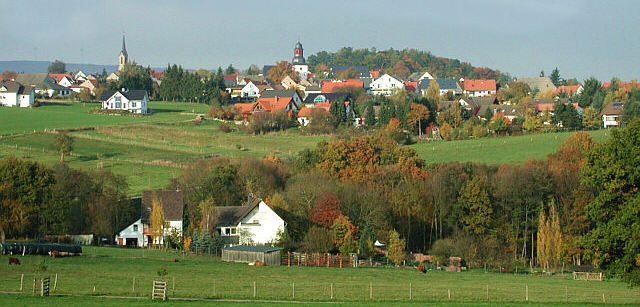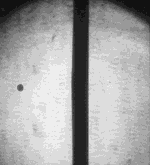|
Dörrebach
Dörrebach is an ''Ortsgemeinde'' – a municipality belonging to a ''Verbandsgemeinde'', a kind of collective municipality – in the Bad Kreuznach district in Rhineland-Palatinate, Germany. It belongs to the ''Verbandsgemeinde'' Langenlonsheim-Stromberg, whose seat is in Langenlonsheim. Geography Location Dörrebach lies in the northeast of the Soonwald, which is part of the Hunsrück not far from the seam where it meets the ''Binger Wald'' (forest). The Soonwald stretches out between the Guldenbach and the Simmerbach and with an area of 25 000 ha is after the Palatinate Forest western Germany’s second biggest contiguous woodland. In this sanctuary for red deer has been not only the ''Jäger aus Kurpfalz'' (“Hunter from Electoral Palatinate”, the subject of a well known folksong), but also the Hunsrück “national hero” – actually a robber – known as Schinderhannes, who made the place his hideout. Northwest of the village, beyond the Hochsteinch ... [...More Info...] [...Related Items...] OR: [Wikipedia] [Google] [Baidu] |
Schöneberg, Bad Kreuznach
Schöneberg is an ''Ortsgemeinde'' – a municipality belonging to a ''Verbandsgemeinde'', a kind of collective municipality – in the Bad Kreuznach district in Rhineland-Palatinate, Germany. It belongs to the ''Verbandsgemeinde'' Langenlonsheim-Stromberg, whose seat is in Langenlonsheim. Schöneberg is a winegrowing village. Geography Location Schöneberg lies in the Hunsrück on a mountain ridge in the Soonwald between the Guldenbach and Gräfenbach valleys, roughly 10 km southwest of the River Rhine at Bingerbrück. Neighbouring municipalities Clockwise from the north, Schöneberg's neighbours are the municipality of Dörrebach, the town of Stromberg, and the municipalities of Schweppenhausen, Windesheim, Hergenfeld and Spabrücken, all of which likewise lie within the Bad Kreuznach district. Owing to a peculiarity in the way in which the municipal boundaries are laid out, the village site of Eckenroth, whose municipal area does not border on Schöneberg's, actually ... [...More Info...] [...Related Items...] OR: [Wikipedia] [Google] [Baidu] |
Langenlonsheim-Stromberg
Langenlonsheim-Stromberg is a ''Verbandsgemeinde'' ("collective municipality") in the district of Bad Kreuznach, Rhineland-Palatinate, Germany. The seat of the ''Verbandsgemeinde'' is in Langenlonsheim. It was formed on 1 January 2020 by the merger of the former ''Verbandsgemeinden'' Langenlonsheim and Stromberg. The ''Verbandsgemeinde'' Langenlonsheim-Stromberg consists of the following ''Ortsgemeinden'' ("local municipalities"): # Bretzenheim # Daxweiler # Dörrebach # Dorsheim # Eckenroth # Guldental # Langenlonsheim # Laubenheim # Roth # Rümmelsheim # Schöneberg # Schweppenhausen # Seibersbach # Stromberg # Waldlaubersheim Waldlaubersheim is a municipality in the district of Bad Kreuznach in Rhineland-Palatinate, in western Germany. As of the census of population in 2020 it had a total population of 801. Waldlaubersheim's postal code is 55444. Geography and climat ... # Warmsroth # Windesheim External linksOfficial website Verbandsgemeinde in Rhineland-Palat ... [...More Info...] [...Related Items...] OR: [Wikipedia] [Google] [Baidu] |
Bad Kreuznach (district)
Bad Kreuznach is a district in Rhineland-Palatinate, Germany. It is bounded by (from the north and clockwise) the districts of Rhein-Hunsrück, Mainz-Bingen, Alzey-Worms, Donnersbergkreis, Kusel and Birkenfeld. History The region is full of medieval castles, especially along the Nahe River. Best known is the Kyrburg of Kirn, built in the 12th century and sitting in state above the river. In 1815, the district of Kreuznach was established by the Prussian government. In 1932, it was merged with the district of Meisenheim. The name of the district officially changed from Kreuznach to Bad Kreuznach in 1969. Geography The district is located in the hilly country between the mountain chains of the Hunsrück in the north and the North Palatine Uplands in the south. The main axis of the district is the Nahe River, which enters the territory in the west, runs through Kirn, Bad Sobernheim and Bad Kreuznach, and leaves to the northeast. The region formed by this district and the adjo ... [...More Info...] [...Related Items...] OR: [Wikipedia] [Google] [Baidu] |
Central Place Theory
Central place theory is an urban geographical theory that seeks to explain the number, size and range of market services in a commercial system or human settlements in a residential system.Goodall, B. (1987) The Penguin Dictionary of Human Geography. London: Penguin. It was introduced in 1933 to explain the spatial distribution of cities across the landscape. The theory was first analyzed by German geographer Walter Christaller, who asserted that settlements simply functioned as 'central places' providing economic services to surrounding areas. Christaller explained that a large number of small settlements will be situated relatively close to one another for efficiency, and because people don’t want to travel far for everyday needs, like getting bread from a bakery. But people would travel further for more expensive and infrequent purchases or specialized goods and services which would be located in larger settlements that are farther apart. Building the theory To develop th ... [...More Info...] [...Related Items...] OR: [Wikipedia] [Google] [Baidu] |
Hamlet (place)
A hamlet is a human settlement that is smaller than a town or village. Its size relative to a Parish (administrative division), parish can depend on the administration and region. A hamlet may be considered to be a smaller settlement or subdivision or satellite entity to a larger settlement. The word and concept of a hamlet has roots in the Anglo-Norman settlement of England, where the old French ' came to apply to small human settlements. Etymology The word comes from Anglo-Norman language, Anglo-Norman ', corresponding to Old French ', the diminutive of Old French ' meaning a little village. This, in turn, is a diminutive of Old French ', possibly borrowed from (West Germanic languages, West Germanic) Franconian languages. Compare with modern French ', Dutch language, Dutch ', Frisian languages, Frisian ', German ', Old English ' and Modern English ''home''. By country Afghanistan In Afghanistan, the counterpart of the hamlet is the Qila, qala (Dari language, Dari: ... [...More Info...] [...Related Items...] OR: [Wikipedia] [Google] [Baidu] |
Castle
A castle is a type of fortified structure built during the Middle Ages predominantly by the nobility or royalty and by military orders. Scholars debate the scope of the word ''castle'', but usually consider it to be the private fortified residence of a lord or noble. This is distinct from a palace, which is not fortified; from a fortress, which was not always a residence for royalty or nobility; from a ''pleasance'' which was a walled-in residence for nobility, but not adequately fortified; and from a fortified settlement, which was a public defence – though there are many similarities among these types of construction. Use of the term has varied over time and has also been applied to structures such as hill forts and 19th-20th century homes built to resemble castles. Over the approximately 900 years when genuine castles were built, they took on a great many forms with many different features, although some, such as curtain walls, arrowslits, and portcullises, were ... [...More Info...] [...Related Items...] OR: [Wikipedia] [Google] [Baidu] |
Rhein-Hunsrück-Kreis
Rhein-Hunsrück-Kreis is a district (german: Kreis) in the middle of Rhineland-Palatinate, Germany. The neighbouring districts are (from north clockwise) Mayen-Koblenz, Rhein-Lahn, Mainz-Bingen, Bad Kreuznach, Birkenfeld, Bernkastel-Wittlich, Cochem-Zell. History The district was created in 1969, when the districts of St. Goar and Simmern were merged. In 2014 it was expanded with the municipalities Lahr, Mörsdorf and Zilshausen, previously part of Cochem-Zell. Geography The name of the district already mentions the two main geographic features of the district - the river Rhine which forms the boundary to the north-east and the hills of the Hunsrück cover most of the area of the district. The Frankfurt-Hahn Airport is located in the district. Partnerships In 1962, Simmern began a friendship pact with the French region Bourgogne, which was continued after the merging with the St. Goar. In 1985 a partnership was started with the district Nyaruguru (at that time called the mu ... [...More Info...] [...Related Items...] OR: [Wikipedia] [Google] [Baidu] |
Argenthal
Argenthal is an ''Ortsgemeinde'' – a Municipalities of Germany, municipality belonging to a ''Verbandsgemeinde'', a kind of collective municipality – in the Rhein-Hunsrück-Kreis (Districts of Germany, district) in Rhineland-Palatinate, Germany. It belongs to the ''Verbandsgemeinde'' Simmern-Rheinböllen, whose seat is in Simmern. Geography Location Argenthal lies on the northwest edge of the Soonwald, a heavily wooded section of the west-central Hunsrück, which reaches an elevation of 657 m above sea level and is part of the Rhenish Massif. Major centres in the nearby area are Simmern to the west and Rheinböllen to the east. Argenthal's highest elevation is the Schanzerkopf at 643 m above sea level. Also within municipal limits is the Waldsee, a bathing pond that arose from an old ore strip mine that was shut down in 1935. Argenthal is one of the bigger centres in the Hunsrück in which only a few people still work the land. Most of the municipality's inhabitant ... [...More Info...] [...Related Items...] OR: [Wikipedia] [Google] [Baidu] |
Spall
Spall are fragments of a material that are broken off a larger solid body. It can be produced by a variety of mechanisms, including as a result of projectile impact, corrosion, weathering, cavitation, or excessive rolling pressure (as in a ball bearing). Spalling and spallation both describe the process of surface failure in which spall is shed. The terms ''spall'', ''spalling'', and ''spallation'' have been adopted by particle physicists; in neutron scattering instruments, neutrons are generated by bombarding a uranium (or other) target with a stream of atoms. The neutrons that are ejected from the target are known as "spall". Mechanical spalling Mechanical spalling occurs at high stress contact points, for example, in a ball bearing. Spalling occurs in preference to brinelling where the maximal shear stress occurs not at the surface, but just below, shearing the spall off. One of the simplest forms of mechanical spalling is plate impact, in which two waves of compression ... [...More Info...] [...Related Items...] OR: [Wikipedia] [Google] [Baidu] |
Spabrücken
Spabrücken is a municipality in the district of Bad Kreuznach in Rhineland-Palatinate, in western Germany Germany,, officially the Federal Republic of Germany, is a country in Central Europe. It is the second most populous country in Europe after Russia, and the most populous member state of the European Union. Germany is situated betwee .... It has a population of 1,218 residents. References Spabrücken Map- Rhineland https://germany.places-in-the-world.com/2830869-place-spabrucken.html Bad Kreuznach (district) {{BadKreuznach-geo-stub ... [...More Info...] [...Related Items...] OR: [Wikipedia] [Google] [Baidu] |
Seibersbach
Seibersbach is a municipality in the district of Bad Kreuznach in Rhineland-Palatinate, in western Germany Germany,, officially the Federal Republic of Germany, is a country in Central Europe. It is the second most populous country in Europe after Russia, and the most populous member state of the European Union. Germany is situated betwe .... References Bad Kreuznach (district) {{BadKreuznach-geo-stub ... [...More Info...] [...Related Items...] OR: [Wikipedia] [Google] [Baidu] |






